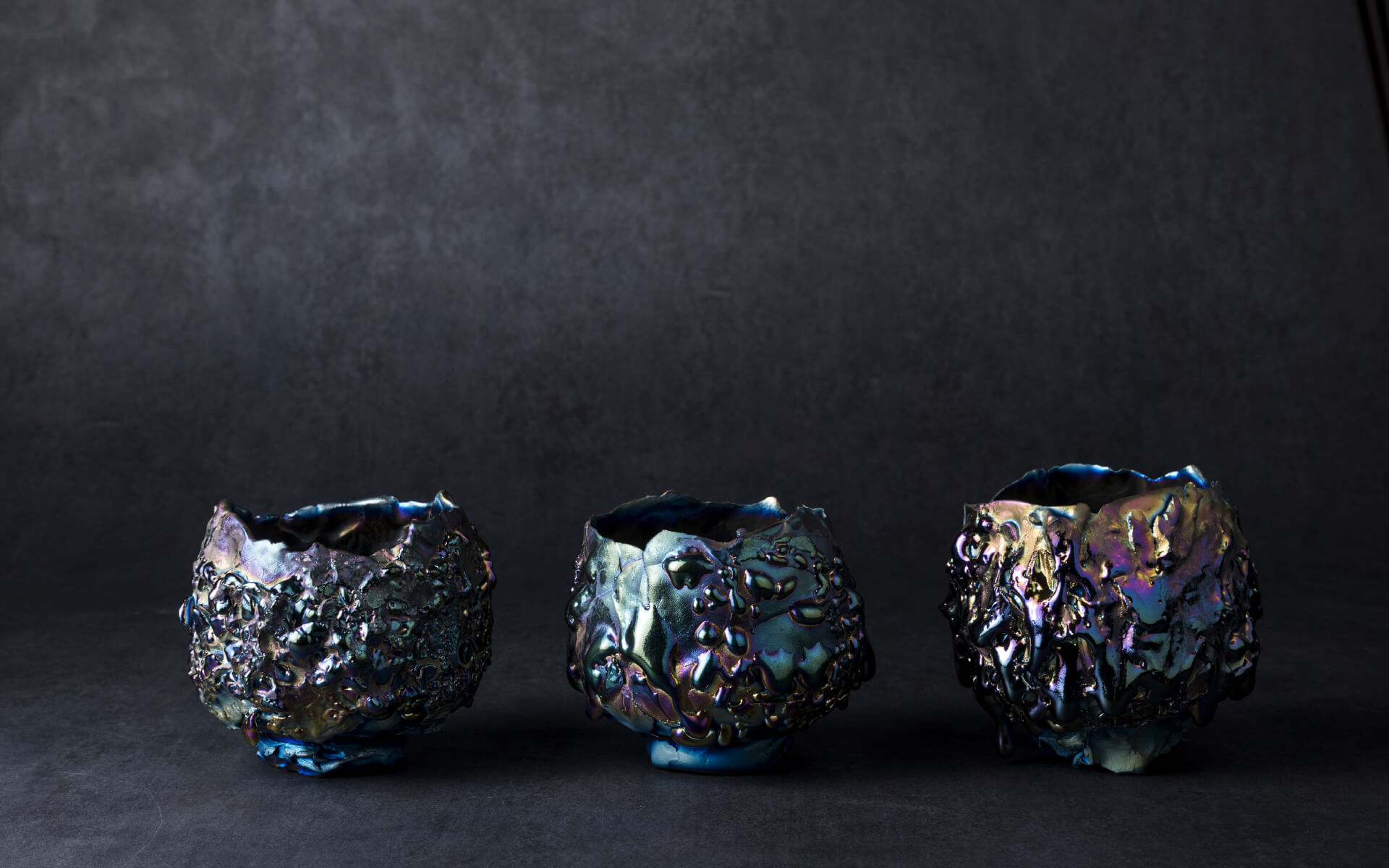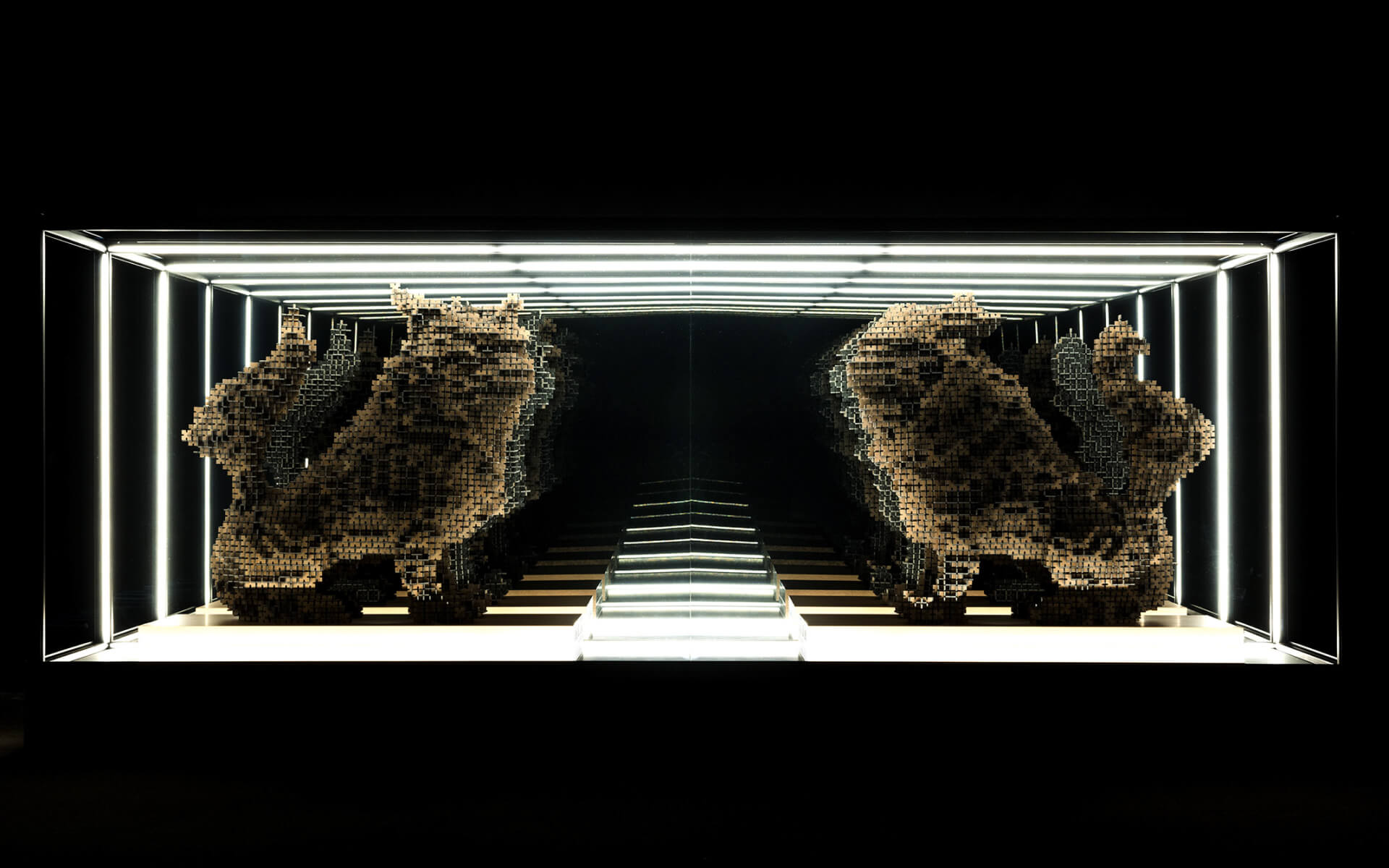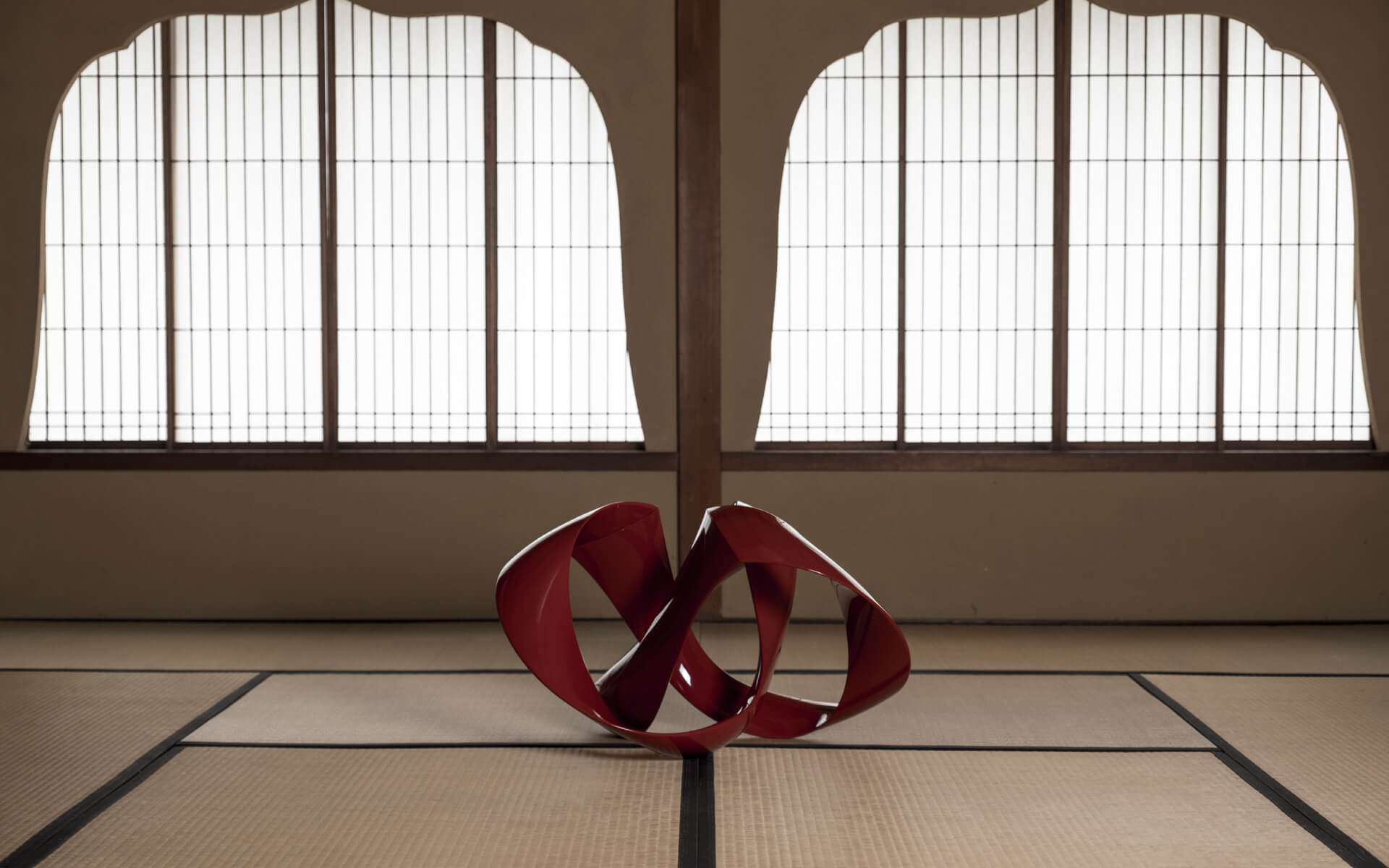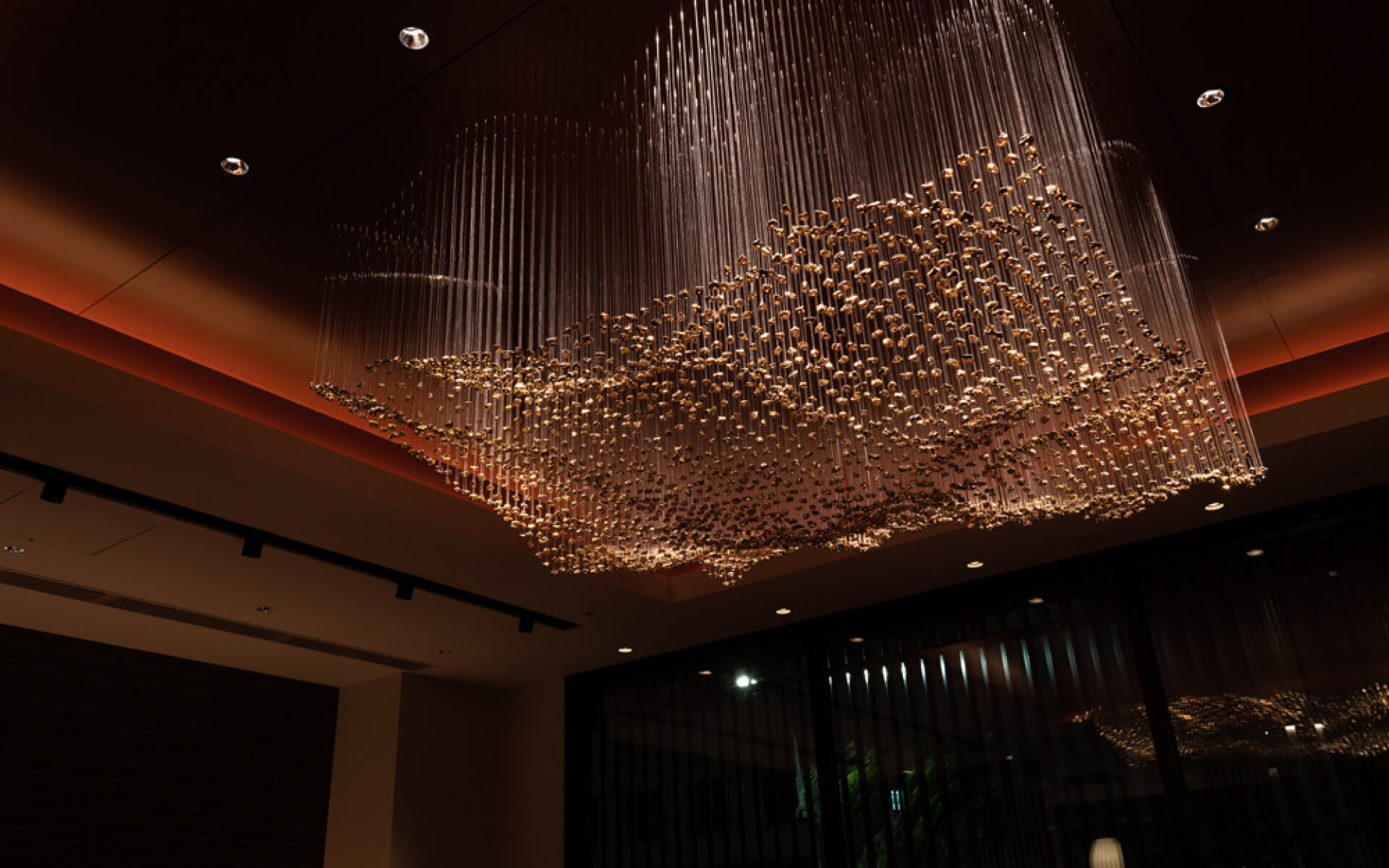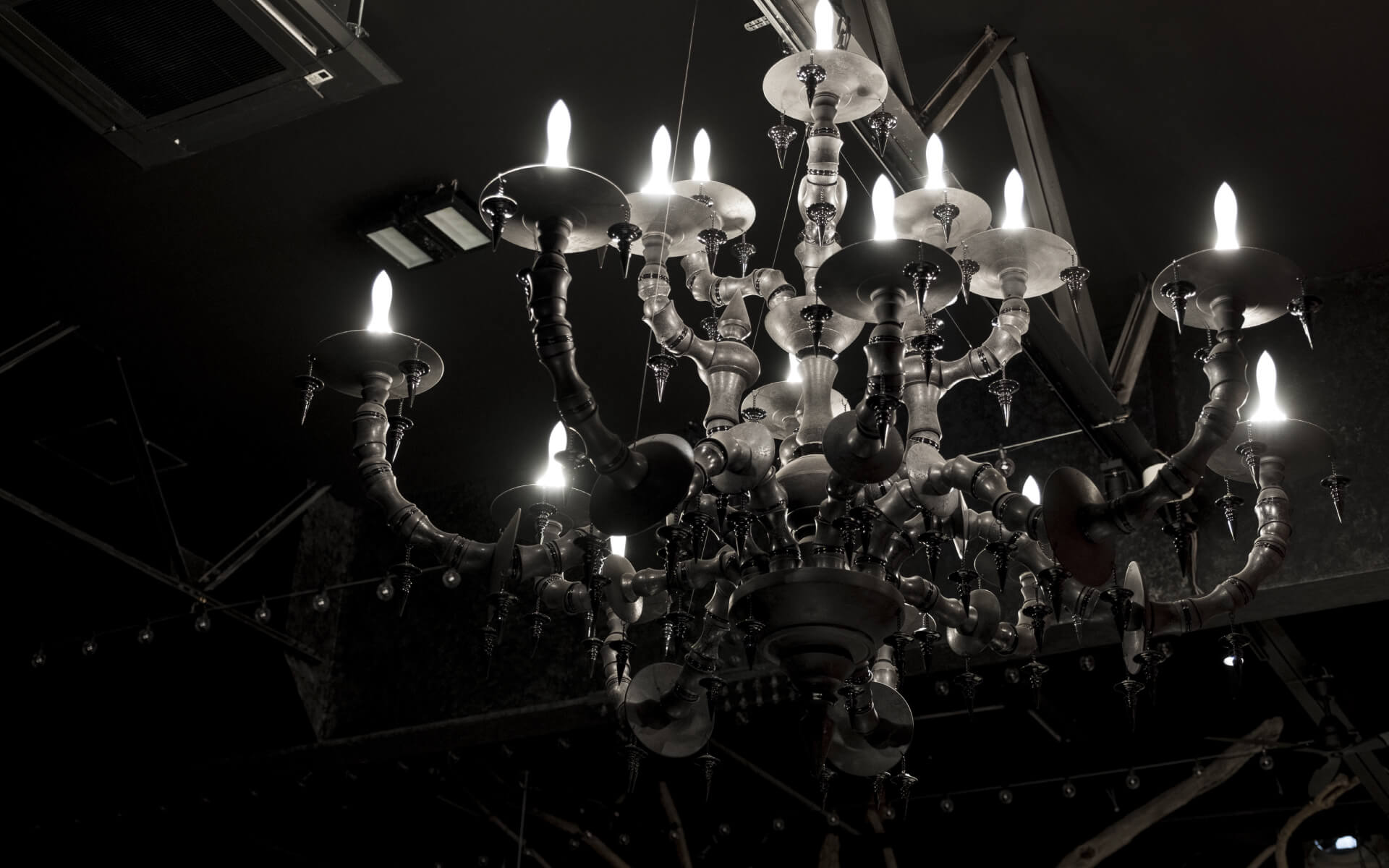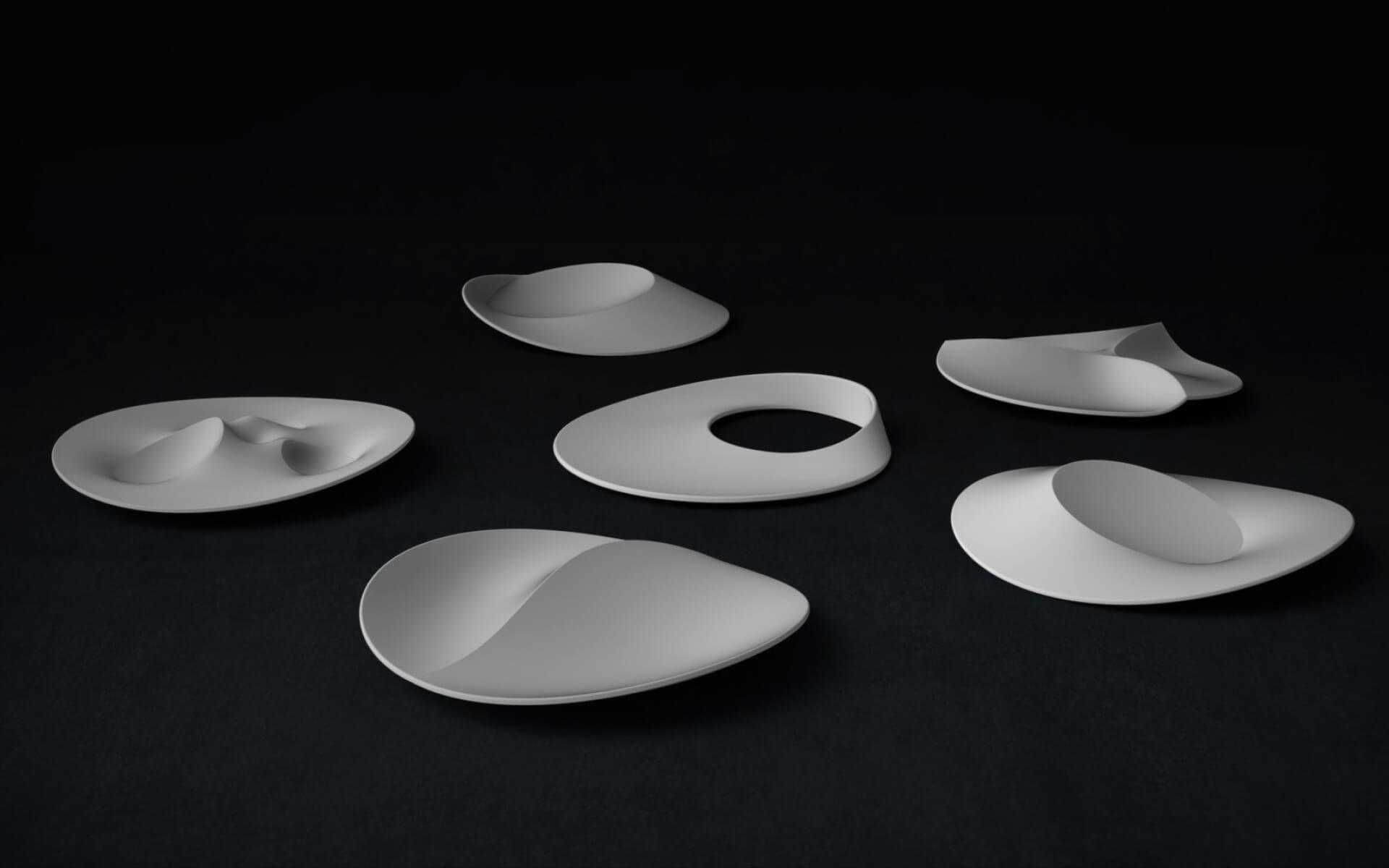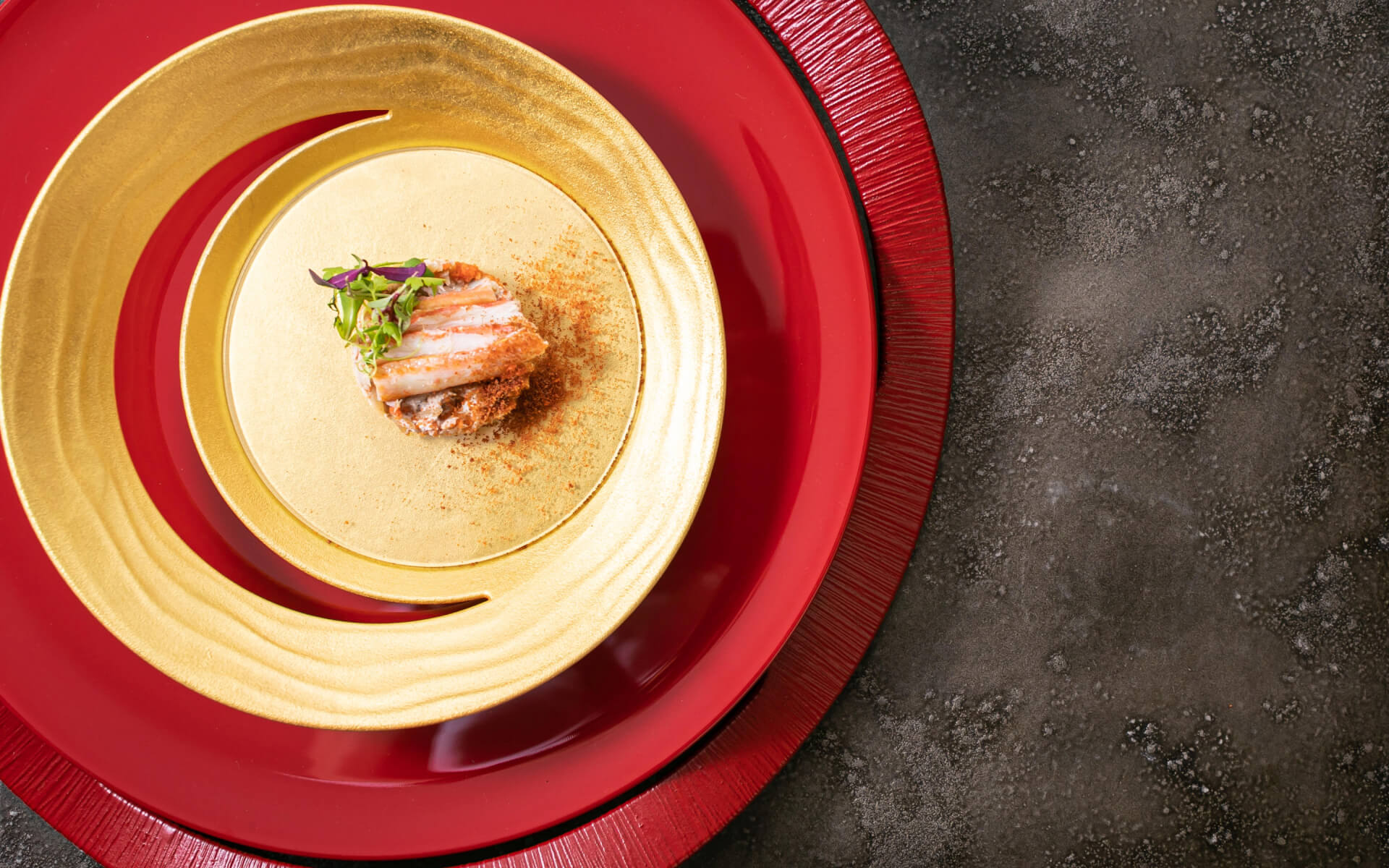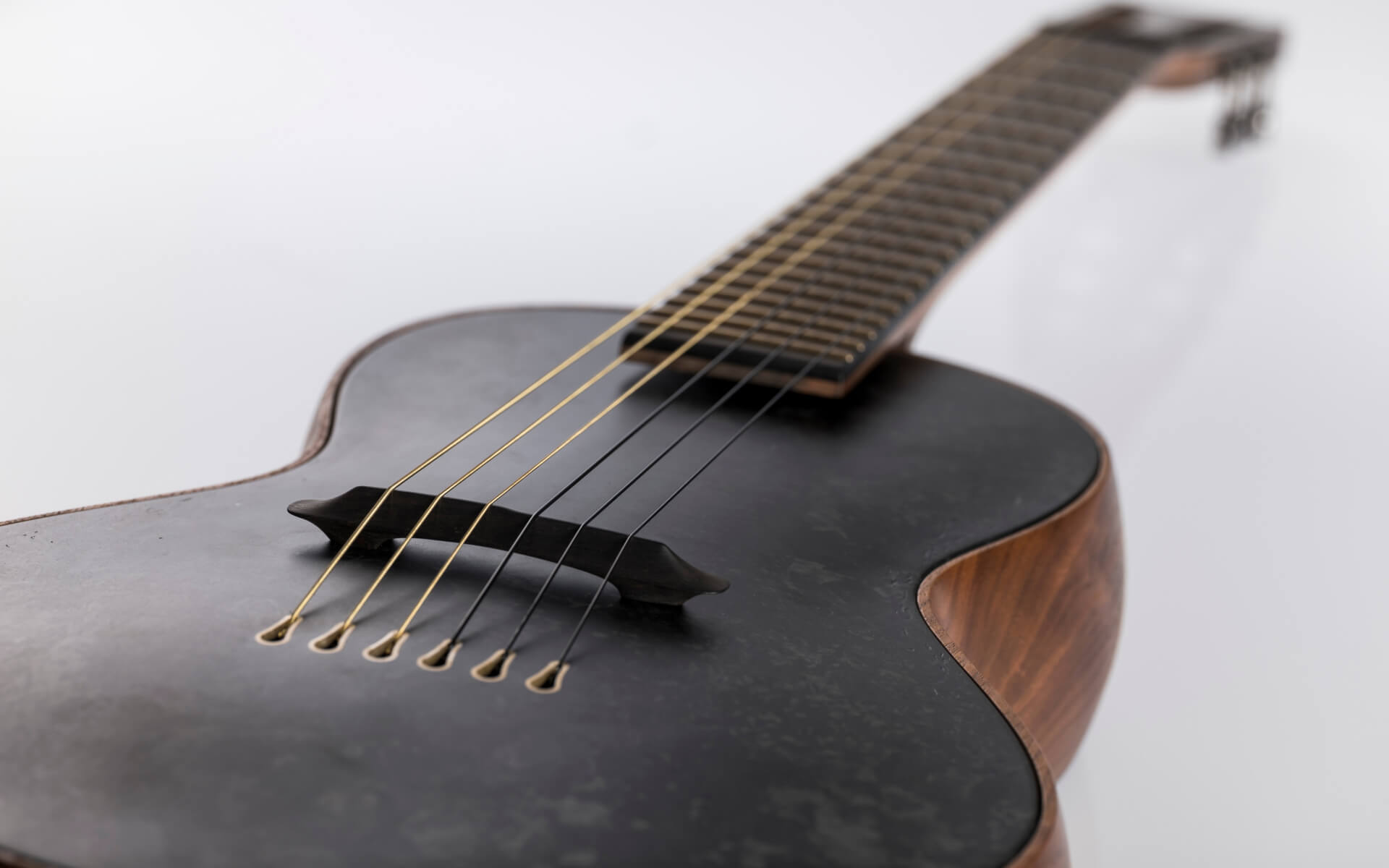WORKS 05Shingi
無色有彩茶盌
美しく虹色に移ろう茶碗。
secca が独自の研究により辿り着いた本作は通常の釉薬焼成の方法では成し得ない質感を実現させました。
まるで小宇宙の様な虹彩は、構造色(※)により成り立っており、特定の波長の光を発光することで様々な色を感じるこ とができます。実質着彩されていないため「無色有彩茶盌」と銘打ちました。
手びねりの茶盌にチタンの工業技術である真空蒸着加工を重ねることで構造色を纏った意匠を実現しています。
工芸と工業の間には相容れぬ暗黙の境界線が存在し、工芸では工業技術の介入を拒んでいるように感じます。 工芸はあくまで修練した手仕事による制作行為で生まれたものであり、100 年以上継続して扱う技法と素材だけがその対 象として認められています。 しかし、工業で培ってきた技術の中にも、人の手と感性と情熱による気の遠くなるような研究と実践の中で培った素晴ら しい技術が数多く存在します。 工芸の目指すところが人が創り出す美しさの探求だとすれば、そして工業の技術の中にその進化を前身させる可能性が あるならば、積極的に工芸の伝統技術と掛け合わせていくことは、自然な行為だと考えています。 本作は、それを実践すること自体をコンセプトとした作品でもあるのです。
(※構造色は、光の波長あるいはそれ以下の微細構造による、分光に由来する発色現象を指す。身近な構造色にはコンパクトディスクやシャボン玉などが挙げられる。それ自身には 色がついていないが、その微細な構造によって光が干渉するため、色づいて見える。)
[素材]
磁土、チタン
[サイズ]
W120mm D120 H90mm
secca が独自の研究により辿り着いた本作は通常の釉薬焼成の方法では成し得ない質感を実現させました。
まるで小宇宙の様な虹彩は、構造色(※)により成り立っており、特定の波長の光を発光することで様々な色を感じるこ とができます。実質着彩されていないため「無色有彩茶盌」と銘打ちました。
手びねりの茶盌にチタンの工業技術である真空蒸着加工を重ねることで構造色を纏った意匠を実現しています。
工芸と工業の間には相容れぬ暗黙の境界線が存在し、工芸では工業技術の介入を拒んでいるように感じます。 工芸はあくまで修練した手仕事による制作行為で生まれたものであり、100 年以上継続して扱う技法と素材だけがその対 象として認められています。 しかし、工業で培ってきた技術の中にも、人の手と感性と情熱による気の遠くなるような研究と実践の中で培った素晴ら しい技術が数多く存在します。 工芸の目指すところが人が創り出す美しさの探求だとすれば、そして工業の技術の中にその進化を前身させる可能性が あるならば、積極的に工芸の伝統技術と掛け合わせていくことは、自然な行為だと考えています。 本作は、それを実践すること自体をコンセプトとした作品でもあるのです。
(※構造色は、光の波長あるいはそれ以下の微細構造による、分光に由来する発色現象を指す。身近な構造色にはコンパクトディスクやシャボン玉などが挙げられる。それ自身には 色がついていないが、その微細な構造によって光が干渉するため、色づいて見える。)
[素材]
磁土、チタン
[サイズ]
W120mm D120 H90mm
A beautifully shifting rainbow-colored teacup.
This piece, which was finally completed through secca’s original research, generates a texture that cannot be achieved by using the usual glaze firing method.
The iris, which is like a microcosm, is composed of structural colors(*), and allows for perceiving various colors that emits light of a specific wavelength. With no coloring on its surface, the teacup is called a “colorless teacup”.
The design of the structural colors is achieved by layering vacuum deposition processing, an industrial technique of titanium, on an hand-twisted teacup.
We feel there is a conflicting and implicit boundary between craft and industry, with craft seemingly refusing to interfere with industrial technology.
Crafts are only born from the act of creating by trained hands, and only techniques and materials that have been used continuously for over 100 years are recognized as such.
However, even among the technologies developed in the industry, there are many exceptional technologies that have been cultivated through extensive research and practice by the hands, senses, and passion of people.
If craft aims to search beauty created by people, and if there is a potential for such beauty to evolve in industrial techniques, it is a natural act to proactively blend with craft’s traditional techniques.
This work is also a concept in itself.
(*Structural color refers to a spectrally induced coloring phenomenon caused by microstructures at or below the wavelength of light. Familiar structural colors include compact discs and soap bubbles. It appears to be colored due to light interfering with the fine structure but are actually colorless.)
[Size]
Pottery, Titanium
[Size]
W120mm D120 H90mm
This piece, which was finally completed through secca’s original research, generates a texture that cannot be achieved by using the usual glaze firing method.
The iris, which is like a microcosm, is composed of structural colors(*), and allows for perceiving various colors that emits light of a specific wavelength. With no coloring on its surface, the teacup is called a “colorless teacup”.
The design of the structural colors is achieved by layering vacuum deposition processing, an industrial technique of titanium, on an hand-twisted teacup.
We feel there is a conflicting and implicit boundary between craft and industry, with craft seemingly refusing to interfere with industrial technology.
Crafts are only born from the act of creating by trained hands, and only techniques and materials that have been used continuously for over 100 years are recognized as such.
However, even among the technologies developed in the industry, there are many exceptional technologies that have been cultivated through extensive research and practice by the hands, senses, and passion of people.
If craft aims to search beauty created by people, and if there is a potential for such beauty to evolve in industrial techniques, it is a natural act to proactively blend with craft’s traditional techniques.
This work is also a concept in itself.
(*Structural color refers to a spectrally induced coloring phenomenon caused by microstructures at or below the wavelength of light. Familiar structural colors include compact discs and soap bubbles. It appears to be colored due to light interfering with the fine structure but are actually colorless.)
[Size]
Pottery, Titanium
[Size]
W120mm D120 H90mm



